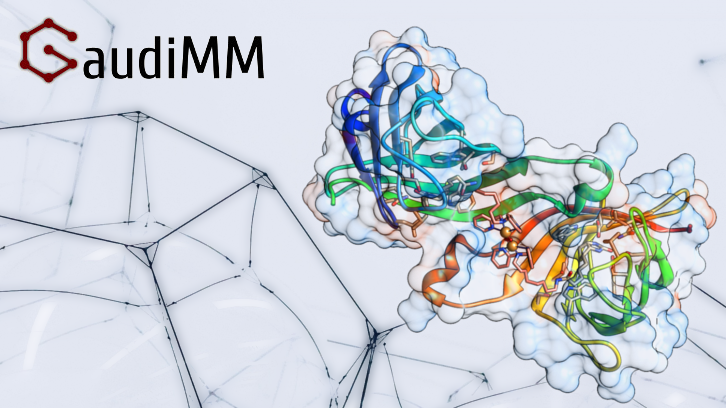A new strategy for computational design of Molecular Systems

Universitat Autònoma de Barcelona. It relies on algorithms inspired by natural selection to optimize chemical structures that can satisfy several criteria at once. It is freely available at
www.github.com/insilichem/gaudi.
Beyond experimental laboratories, a branch of chemistry is dedicated to understand or optimize chemical reactions, simulate the behaviour of molecules along time or identifying possible therapeutical targets… with a computer. Molecular Modeling is what this is about: Producing atòmic Descriptions of (bio)chemical behaviour at the sub-nanometer scale (10-9 m).
InsiliChem, a research team led by Prof. Dr. Jean-Didier Maréchal, is working on new software for chemists for years. Its main effort is a platform to integrate several tools of molecular modelling in a cohesive user experience. GaudiMM is the main entry point to this platform, dedicated to provide a new way of creating molecular models suitable for starting any computational study and circumvent the frequent lack of structural information obtained from experimental methods (i.e. X-ray, NMR) To do that, GaudiMM applies an optimization algorithm called ‘genetic algorithm’, based on the same principles natural selection has applied to evolution: fittest individuals will be able to propagate its features to the next generation with higher probability. In the application of genetic algorithm to optimization approaches, each individual is a “candidate solution” to solve the problem.
The closer to the solution, the fitter the candidate is, and its features will be propagated more easily towards future generations. Genetic algorithms start with a initial random population of candidate solutions and followed by a large number of repeated cycles where candidates are are evaluated and only the best are selected for next round. Those that did not make it are replaced by new individuals, be it created randomly (using for example mutation operators) or by combination of some of the survivors of the preceding generation (using for example mating operators). Repeating this process of ‘natural selection’ a sufficient number of times, the population will have evolved and eventually provided a good answer to the problem.
In GaudiMM, each individual or candidate solution is a set of features that define a molecular structure: some atoms bonded in a particular way that can move following certain basic rules (rotation, translation, torsion…). The environment they have to survive to is just a list of criteria they have to satisfy: inexistence of unfeasible bad atomic contacts, meeting an adequate distance between key atoms responsible for a given reaction…
In fact, any (bio)chemical problem could be defined with a set of objective the molecule should fit. The user just needs to identify the correct combination of features the system might explore and then define which objective should be used for evaluation.
GaudiMM has already been successfully applied in the optimization of partially characterized structures (useful for material design), guessing the correct pose of several molecules within a protein (vital for drug discovery) or refining structural databases of metal-containing organic compounds.
Departament of Chemistry
Physical Chemistry Area
Universitat Autònoma de Barcelona
References
Jaime Rodríguez-Guerra Pedrega, Giuseppe Sciortino, Jordi Guasp, Martí Municoy, Jean-Didier Maréchal GaudiMM: A modular multi-objective platform for molecular modeling. Computational Chemistry Volume 38, Issue 24 2017 10.1002/jcc.24847
www.github.com/insilichem/gaudi .


